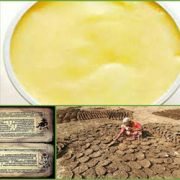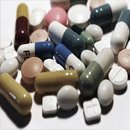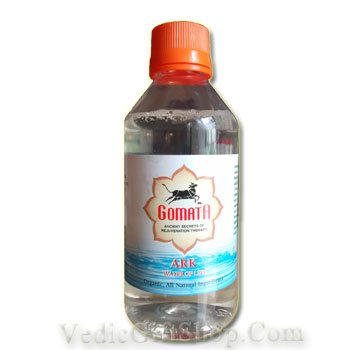Summary Of Bhagavad Gita
/6 Comments/in BooksIntroduction to Bhagavad Gita
Bhagavad Gita, the Gitopanisad, is a transcendental literature, is also the essence of all the Upanisads, is just like cow and Lord Shri Krishna is like the cowherd boy who is milking this cow. Arjuna is like the calf and pure devotees are to drink the nectarian milk of Bhagavad Gita.
Bhagavad Gita is one of the sections of the Bhishma Parva of the Mahabharata, world’s largest of all scriptures. Bhagavad Gita is the song of the Supreme Lord Krishna. This timeless treatise spoken by the Lord, has been acknowledged the world over for its unfathomable depth and replete with practical instructions. The world’s foremost western and eastern philosophers have paid rich tributes for the priceless wisdom that it offers to mankind. A discerning person with just contemplation will notice that all the instructions contained in the Bhagavad Gita is also contained in all other religious scriptures of the world, but there is higher knowledge, which is not found in any other book of knowledge.
The Bhagavad Gita AS IT IS Audiobook
(The best audio version of the Bhagavad Gita, the ancient Hindu spiritual text, with music!)
Subject Matter Of The Bhagavad Gita
The subject matter of Bhagavad Gita deals with
- the ishvara,
- the supreme controller
- the jivas, the controlled living entities
- Prakriti (material nature)
- Kala (time-the duration of existence of the whole universe or the manifestation of material nature) and
- karma (activity) are also discussed.
Panchagavya & Organic Farming Techniques
/23 Comments/in Cow ProductsWonderful videos about
Manure, Life & the Bio-fuel Miracle of the Cow
Description of certain organic farming techniques used by farmers in various villages.
Sanjeevak or Amrut Paani
- 20 litres of Sanjeevak preparation Technique requires –
- 10litre Cow Urine – collected over 1-2 days.
- 10kg Cow Fresh Dung
- 1kg Jagerry [Gur]
Mix all these together in a bucket and keep covered with a cloth to avoid flies. The bucket should be stirred twice a day for 7 to 10 days. After 10 days Sanjeevak will be ready for use. It must be used in a dilution of 1:9 i.e. for 1litre of Sanjeevak 9 litres of water should be mixed to obtain 10 litres of solution.
Sanjeevak can be applied to plants as a spray or directly applied to the soil. In case of trees, a boundary basin of 2mx2m can be created and solution poured directly at this basin. Sanjeevak can easily be stored for 2 months in an earthen pot but must be kept moist and aerated. Read more
Gomutra Ark – As Immunomodulatory & Antioxidant Agent
/3 Comments/in Cow ProductsImmunomodulatory And Antioxidant Effect Of Gomutra Ark In Rats
D. D. GOSAVI (Professor, Dept. Of Pharmacology, MGIMS Sewagram)
D SACHDEV (Asst.Professor, Govt. Medical College Jagdalpur)
K SALWE (Asst. Professor, MGMC &RI, Pillaiyarkuppam, Puducherry )
Introduction
In Sushrita Samhita Gomutra (Cow urine) has been described as the most effective substance/secretion of animal origin with innumerable therapeutic values. In India, drinking of cow urine has been practised for thousands of years.
All the five products such as urine, milk, ghee, curd and dung obtained from cow possess medicinal properties and are used singly or in combination with some other herbs against many diseases including Cancer, AIDS and Diabetes.1,2 This kind of alternative treatment, termed as “cowpathy’.
Read more
Videos – Yoga Asanas, Pranayam & Health Benefits
/0 Comments/in Patanjali Divya ProductsPranayama and Yoga exercises from Baba Ramdev to keep body healthy and cure diseases. (English/Hindi)
English – Yoga by Baba Ramdev Swami
These videos contain Yoga asanas for getting rid of all ailments along with basic things like,
Aasan | Active Meditation | Cancer | Childless Couples | Children | Constipation & Piles | Diabetes | Eye Diseases | High Blood Pressure | Insomnia | Leucoderma | Muscular Dystrophy | Musculoskeletal Disorders | Obesity | Parkinson’s Disease & Paralysis | Pranayam | Psoriasis – Skin Diseases | the Youth | Vertebral Column- Spinal Cord | Yoga Practices and Lifestyle
[youtubegallery]
Aasan|http://www.youtube.com/watch?v=69yOBLMiZgg
Active Meditation|http://www.youtube.com/watch?v=MeOsPcAx9RU
Cancer|http://www.youtube.com/watch?v=4SBHN-qdVN8
Childless Couples|http://www.youtube.com/watch?v=cp09cn1B9J4
Children|http://www.youtube.com/watch?v=YviShwFsZVo
Constipation & Piles|http://www.youtube.com/watch?v=hku3qxXwP6A
Diabetes|http://www.youtube.com/watch?v=FSGkzqYhaks
Eye Diseases|http://www.youtube.com/watch?v=L5jP0QH0yhE
[/youtubegallery]
Read more
Panchagavya – Uses, Benefits & Preparation
/24 Comments/in Cow ProductsDownload PDF File: Book On Cow Panchagavya Uses, Benefits & Preparation
Panchagavya is a group of derivatives of 5 elements obtained from cows i.e.
- Cow Urine
- Cow Dung (Gomaye)
- Cow milk
- Cow Curd (Godadhi)
- Cow Ghee (Goghrta)
It can be considered as a gift from the heavens for the absolute well-being and good health of human beings.
Ancient scriptures such as “Bhel Samhita”, “Kashyap samhita”, “Charak samhita”, “Sushrutu Samhita”, “Gad Nigraha” & “Ras Tantra Saar”, speak highly about the divinity and significance of Panchagavya in human life.
It is believed that consumption of Panchagavya results in removal of physical as well as mental disorders and is an enhancer of Life force Energy, Physical Strength & Life Span.
Regular consumption of Panchagavya results in
- The removal of slow poisons from the body,
- Miraculous healing of food addictions,
- Cure from side effects of Alcohol & Tobacco consumption as well as Atmospheric Pollutants
- Strengthening of immune system
Panchagavya is prepared by the mixture of
- 1 part – Cow Ghee
- 1 part – Cow Urine
- 2 parts – Cow Curd
- 3 parts – Cow Milk
- ½ part – Cow Dung
The different constituents of Panchagavya have specific & unique healing properties and hence each of it can be used individually too for treatments of diseases and their prevention.
Cow Urine Therapy Benefits
/7 Comments/in Cow ProductsThe idea behind this article is to bring to focus, the science behind Cow Urine, Cow Urine Therapy and its countless benefits.
We have been taught a phrase quite early in life by the wise ones, and that is:
Do not accept anything blindly; Read / Listen / understand carefully, Analyze, Conclude and then Apply.
It has also been said by our elders:
Don’t consume anything that your great grandmother doesn’t approve of.
 To start with, I would like to quote few lines by Srila Prabhupada, ISKCON, Vrindavan on “Holiness of Cows And their Precious Gift to the Human Race”
To start with, I would like to quote few lines by Srila Prabhupada, ISKCON, Vrindavan on “Holiness of Cows And their Precious Gift to the Human Race”
There is nothing which is more sacred or sanctifying than cows;
People should cherish cows for obtaining prosperity and peace. The supreme personality of Godhead Lord Krishna specifically mentions cow protection in Bhagwad-Gita
Without Cow Protection and Cultivation, no human civilization or ethical values can prosper at length. In the Rig Veda, there is one whole section devoted to the cow. It is called “Go sooktham”.
Read more
How To Protect Yourself Against Bugs
/0 Comments/in Fact FinderIf you think that bugs are just wishy-washy bugs that cause flu, tummy upsets and other relatively minor inconveniences – think again.
Infectious diseases are now a major threat to your health – and your family’s health.
There are several main reasons why infectious diseases are back.
First, international air travel means that killer bugs can be brought from the jungle to the city within hours. There was far less danger when infected individuals travelled on slower, more traditional forms of transport. Patients carrying the disease would have died long before they reached heavily populated cities.
Second, bugs such as viruses are constantly changing – and getting stronger. As scientists produce new vaccines, existing viruses adapt and change. The deadly Ebola virus used to be transmitted through the blood. But changes to the virus in a laboratory means it can now spread through the air – like flu. In 1918-19 a flu bug far less deadly than the Ebola virus killed 25 million people. Genetic engineers experiment with viruses (sometimes for military purposes) and produce new, stronger, more lethal infections.
Third, vivisectors in laboratories around the world are constantly giving existing viruses to animals. They use some of the rarest and most deadly viruses. Some of the research work is done for the military – who want ever more lethal viruses for biological warfare. Problems really start when viruses – or infected animals – escape from laboratories. There are countless billions of viruses in the world -each one a thousandth the size of a bacterium. Everyone could be a ticking time bomb.
Fourth, the overprescribing and abuse of antibiotics means that bugs have acquired immunity and have become stronger and more lethal.
- Your body’s immune system helps to protect you against infection. If your immune system – your inbuilt defence system – is in tip-top condition then you will be far less vulnerable to these marauding bugs. What you choose to cat can have a big effect on the strength and effectiveness of your immune system. You can strengthen your immune system and reduce your susceptibility to infections (and cancer) by changing your diet. You must do everything you can to keep your body’s immune system in tip-top condition. It is vital to eat regular supplies of foods which contain antioxidants. Recommended foods include: apples, asparagus, baked beans, broccoli, brown rice, Brussels sprouts, cabbage, cauliflower, chick peas, corn, grapefruit, lentils, oats, oranges, peas, pineapples, potatoes, soya beans, spinach, strawberries. I also recommend taking sunflower and pumpkin seeds daily.
- Unless your diet naturally contains garlic then I recommend that you take a garlic supplement every day.
- If you eat meat it is important that you give it up – particularly if you have an infection which is being treated with antibiotics. The spread of a number of killer infections has been traced to meat shipments. The basic cause is simple: farmers routinely feed antibiotics to their animals to keep them healthy. Animals which are fed with antibiotics inevitably acquire antibiotic resistant organisms. Repeated problems caused by meat infected with antibiotic resistant E. Coli are a direct result of this still unregulated and uncontrolled farming practice. Many of the people who fall ill after eating infected meat have been taking antibiotics – for throat or ear infections for example. The antibiotic prescribed for the throat or ear infection clears the body of many of its natural infections, allowing the antibiotic resistant superbug to take over a virtually competitor free body.
- Stress will damage your immune system and impair your body’s ability to fight infection. It is, therefore, important that you reduce your exposure to unnecessary stress. Make a list of all the factors which add stress to your life and then avoid those stresses which can be avoided.
- Try to avoid buildings which have closed circuit air conditioning systems. When air is constantly recirculated your chances of acquiring an infection are dramatically increased. If one person sneezes or coughs then the chances are high that everyone in the building will be exposed to the bug.
- You should try to keep away from hospitals, doctors’ clinics and other places where sick people congregate – and where antibiotic resistant bugs are likely to be much in control. I used to favour open plan wards since patients in such wards can be kept constantly under supervision by nurses. The explosion in the incidence of antibiotic resistant bugs means that single rooms are now preferable for any patient requiring hospital treatment.
- Whenever possible you should avoid methods of public transport which recirculate used air. Modern trains tend to have no opening windows – with the result that if one person sneezes in a carriage the chances are that everyone else will be exposed to (and possibly catch their disease).
- If you eat eggs do not ever buy (or eat) eggs with cracked shells. It is much easier for an infection to enter an egg with a cracked shell. Eggs laid by genuinely free range chickens are likely to be healthier than eggs laid by hens kept in battery cages.
- Make sure that your fridge is kept cold enough. The temperature inside your fridge should be below 3 degrees Centigrade.
- Make sure that you wash your hands thoroughly before preparing food. Staphylococcus, for example, can be transmitted hand to hand. Wash all kitchen dishes and cutlery thoroughly in hot, soapy water.
- Never refreeze food which has been previously frozen and then thawed. Thawing increases the number of bacteria and refreezing food increases the chances of infection.
- If you eat meat make sure that it is completely thawed before you start to cook it. If you do not do this then the chances are that the middle of the meat will still be frozen when you start to cook it – and will not be properly cooked when the rest of the meat is ready. Meat which is raw will probably be full of bugs.
- Keep foods apart from one another in your fridge in order to reduce the risk of cross contamination. Put meat (a high risk source of infection) at the bottom of the fridge and keep it away from other foods.
- Don’t ever buy tins which are rusty, bulging or badly damaged.
- Always check the sell-by date before buying food. Don’t be tempted to buy (or use) food which has passed its sell-by date.
- If your doctor wants to prescribe an antibiotic ask him if he thinks it is really essential — or if he is just giving you the prescription because he thinks you want an antibiotic. Don’t take these drugs unless you really need them.
- Eat live yoghurt – which contains the ‘friendly’ lactobacillus acidophilus. (Soya yoghurt also contains it).
- Don’t take drugs (either prescribed or bought over the pharmacy counter) unless you really need them. Always investigate other ways to deal with health problems.
- Teach children not to cough or sneeze without using a handkerchief.
- Try not to touch your eyes with your lingers – that’s an easy way for bugs to get into your body.
How To Cut Your Cancer Risk By 80 Per Cent
/0 Comments/in Fact FinderDoctors spend enormous amounts of time, energy and money on treating cancer but don’t spend much time telling their patients how to avoid cancer.
However, astonishingly, doctors now what causes 80 per cent of all cancers. It is my view that you should be able to reduce your cancer risk by 80 per cent by avoiding those “triggers” which are known to be responsible for causing cancer.
Here is my advice:
- Don’t smoke tobacco and keep away from other people who smoke tobacco.
- Cut your consumption of fatty food.
- Do not eat meat.
- Eat plenty of fresh fruit and vegetables.
- Eat plenty of fibre and whole grain foods.
- Do not have any unnecessary X-rays.
- Do not spend long periods of time in the sun.
- Try not to live underneath of close to electricity power lines or close to an electricity supply station. Do not sleep or sit too close to electrical appliances.
- Avoid foods which contain large quantities of additives.
- Keep your weight under control.
- Minimise your consumption of alcohol.
- Avoid smoked, salt-cured, salt-pickled or barbecued foods.
Side Effects Of Drugs
/0 Comments/in Fact FinderDespite the fact that one must hold the pharmaceutical industry directly responsible for most of the side effects (and deaths) caused by drugs there is no doubt that the number of problems could be reduced if patients were more aware of how best to protect themselves from side effects.
It is a sad but true fact that of all the drugs prescribed only a relatively small number are taken in the way that the prescriber originally intended them to be taken. Drugs arc taken at the wrong time, they are taken too frequently and they are sometimes never taken out of the bottle at all.
It is important to remember that modern prescribed drugs are not only potentially effective but also powerful and potentially dangerous.
There are several questions which should be answered before a patient starts taking a drug – for example, how long the drug should be taken for, whether it should be taken before, during or after meals and whether it can cause drowsiness. Usually the answers to these questions will appear on the label of the bottle containing the drugs. If the answers do not appear there then the fault may lie with the doctor who wrote the prescription or the pharmacist who dispensed it.
Here are some things to watch out for:
- Some drugs can be stopped when symptoms cease. Others need to be taken as a complete course. A small number of drugs need to be taken continuously and a second prescription will have to be obtained before the first supply has run out. The patient who knows what his drug is for, why he is taking it and what the effect should be, will be more likely to know when a drug is to be stopped.
- If a drug has to be taken once a day, it is usually important that it is taken at the same time each day. If a drug has to be taken twice a day it should be taken at intervals of 12 hours. A drug that needs to be taken three times a day should be taken at eight-hourly intervals and a drug that needs taking four times a day should be taken at six-hourly intervals. The day should be divided into suitable segments.
- Some drugs which may cause stomach problems are safer when taken with meals. Other drugs may not be absorbed properly if taken with food.
- A number of patients (particularly the elderly) are expected to remember to take dozens of pills a day. When a day’s medication includes tablets to be taken twice daily, three times daily, mornings only and every four hours, mistakes are inevitable. If a patient needs to take a number of drugs a day mistakes can be minimised by preparing a daily chart on which the names and dines of different drugs are marked. Such a chart will reduce the risk of a patient taking one dose twice or struggling to remember whether a particular pill has been taken yet. To avoid the risk of overdosage, sleeping tablets should not be kept by the bedside. It is too easy for a half-asleep patient to mistakenly take extra tablets. In the case of a suspected overdose medical attention must be sought.
* * *
Here is a list of some possible, common side effects:
- Drowsiness is a common problem with all drugs which have an effect on the central nervous system – these include sedatives, tranquillisers, sleeping pills, most drugs used in the treatment of anxiety and depression and drugs used in the treatment of epilepsy. Drowsiness is also common with antihistamines (these are commonly used for allergies and so patients suffering from hayfever, for example, should be aware that their medication may make them feel sleepy).
- Nausea and vomiting may be caused by many different drugs including pain relievers, drugs used to treat infections, hormones and drugs prescribed for heart conditions.
- Dizziness is commonly caused by aspirin but drugs used to treat high blood pressure, nerve disorders such as anxiety and depression and infections can also cause this side effect.
- Drugs such as penicillin which are used to treat infections often cause diarrhoea – as do some drugs prescribed for intestinal disorders such as indigestion, gastritis and constipation.
- Headache is a symptom that is associated with an enormous range of drugs.
- Drugs used in the treatment of high blood pressure and in the treatment of nerve problems seem particularly likely to produce a dry mouth.
- Pain relievers, drugs used to treat infections and steroid drugs are the prescription products which seem most likely to cause indigestion or wind.
- Skin rashes are extremely common among patients taking drugs. Drugs used to treat infections – such as penicillin and sulphonamide – are commonly associated with this problem. A skin rash may suggest an allergy to a drug.
- Itching associated with a skin rash means that an allergy reaction is almost certain.
- Constipation is a common side effect with pain relievers, antacids, cough medicines and (naturally enough) drugs used in the treatment of diarrhoea.
- Other side effects which are commonly noticed by patients taking prescription drugs include: confusion, hallucinations, tremors, fainting, wheezing, palpitations, blurred vision, depression, sweating, ringing in the ears and sexual problems such as frigidity and impotence.
* * *
Here are some tips to help you minimise your risk of developing a side effect if you have to take a prescription drug.
- Always follow any specific instructions that you have been given by your doctor. Read the label on your bottle of pills and take notice of what it says.
- When you’re not using them drugs should be stored in a locked cupboard out of reach of children, in a room where the temperature will be fairly stable. The bathroom is probably the worst room in the house for storing medicines. Your bedroom -which probably has a more stable temperature – is much better.
- Never take drugs which were prescribed for someone else. Return all unused supplies of drugs to your pharmacist.
- It is wise to assume that all prescribed drugs can cause drowsiness. You shouldn’t drive or operate machinery after taking a drug until you are sure that you are safe.
- Drugs do not mix well with alcohol. If you want to drink while taking drugs ask your doctor whether or not it will be safe.
- Do not take non-prescribed medicines while taking prescribed drugs unless your doctor has told you that you can.
- Do not stop taking drugs suddenly if you have been advised to take a full course. Ring your doctor for advice if you need to stop for any reason. Some drugs have to be stopped gradually rather than abruptly.
- Be on the look out for side effects and remember that if you seem to develop new symptoms while taking a prescription drug then the chances are high that the new symptoms were caused by the treatment you are taking for your original symptoms.
- Report any side effects to your doctor – and ask him if he’s going to report the side effects lo the authorities. The vast majority of doctors never bother to report side effects – with the result that potentially hazardous drugs remain on the market for far longer than they should.
- If you need to see a doctor, while taking a drug make sure he knows what you are taking – particularly if he intends to prescribe new treatment for you. Many drugs do not mix well together and may, indeed, react together in a dangerous way.
- Do not assume that a doctor you have seen in the past will remember what he prescribed for you on a previous occasion.
- Learn the names and purposes of the drugs you take. If you are not sure when to take the drugs that you have been given ask your doctor or the pharmacist. If you think you will forget the instructions you are given ask for them to be written down. The name of the drug should always appear on the container.
- Do not remove drugs from their proper containers except when you need them or if you are transferring them to a device intended to improve compliance.
- Try to see the same doctor as often as possible. If several doctors are prescribing for you there may be an increased risk of an interaction between drugs which do not mix well.
- Use drugs with care and caution, but do use them When they are required. Doctors sometimes divide patients into two main groups: those who are willing to take drugs for any little symptom and who feel deprived if not offered a pharmacological solution to every ailment, and those who are unwilling to take drugs under any circumstances. Try not to fall into either of these extreme groups.
Alternative Medicine: Learn When To Use
/0 Comments/in Fact FinderIs alternative medicine safe? Does it work?
Here are some brief notes on some of the best known forms of alternative medicine. But remember: if you are thinking of trying any form of alternative medicine then my advice is that you should check with your own doctor first. Make sure that he is happy about what you are planning to do. And do make sure that the alternative practitioner you intend to consult is properly trained.
These notes are not complete – they are merely intended to provide a very brief, personal introduction to a massive subject.
* * *
Acupressure
 Acupuncture with fingers rather than needles. Like acupuncture the idea is to stimulate the flow of energy along the body’s natural channels. Acupressure is a cross between acupuncture and massage said to be very good for dealing with headaches, backache, muscle pains etc.
Acupuncture with fingers rather than needles. Like acupuncture the idea is to stimulate the flow of energy along the body’s natural channels. Acupressure is a cross between acupuncture and massage said to be very good for dealing with headaches, backache, muscle pains etc.
Acupuncture
 The Chinese, who invented acupuncture, believe that the human body contains 12 channels along which internal energies flow. When one of these channels is blocked illness develops. Acupuncturists stick needles into the skin in an attempt to unblock the channels and allow the energy flow to continue. Over 1000 acupuncture points have now been identified. Acupuncture does work – particularly in the treatment of pain and it is recommended by the World Health Organisation. In addition to helping patients with pain it also works in the treatment of many other disorders.
The Chinese, who invented acupuncture, believe that the human body contains 12 channels along which internal energies flow. When one of these channels is blocked illness develops. Acupuncturists stick needles into the skin in an attempt to unblock the channels and allow the energy flow to continue. Over 1000 acupuncture points have now been identified. Acupuncture does work – particularly in the treatment of pain and it is recommended by the World Health Organisation. In addition to helping patients with pain it also works in the treatment of many other disorders.
Alexander Technique
 Founded at the turn of the last century by an Australian actor called F.M. Alexander who believed that many illnesses develop because we don’t sit, stand or walk properly. People who’ve been trained in the Alexander technique claim it helps relieve many health problems – particularly bone and joint troubles, backache and stress disorders.
Founded at the turn of the last century by an Australian actor called F.M. Alexander who believed that many illnesses develop because we don’t sit, stand or walk properly. People who’ve been trained in the Alexander technique claim it helps relieve many health problems – particularly bone and joint troubles, backache and stress disorders.
Aromatherapy
 Aromatherapists claim that by massaging patients with sweet smelling oils they can treat an enormous range of physical and mental disorders. They choose scented oils from specific flowers, plants and trees to influence moods and treat diseases. The massage itself may be soothing and relaxing.
Aromatherapists claim that by massaging patients with sweet smelling oils they can treat an enormous range of physical and mental disorders. They choose scented oils from specific flowers, plants and trees to influence moods and treat diseases. The massage itself may be soothing and relaxing.
Chiropractic
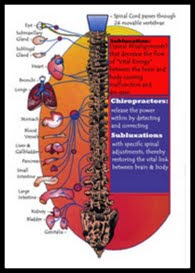 Chiropractic was established by a Canadian called Daniel Palmer who believed that 95 per cent of illnesses are caused by displaced bones in the spine – and can, therefore, be cured by manipulating the spine. There is evidence available to suggest that chiropractic can be useful in the treatment of bone and joint disorders – for example backache.
Chiropractic was established by a Canadian called Daniel Palmer who believed that 95 per cent of illnesses are caused by displaced bones in the spine – and can, therefore, be cured by manipulating the spine. There is evidence available to suggest that chiropractic can be useful in the treatment of bone and joint disorders – for example backache.
Healing
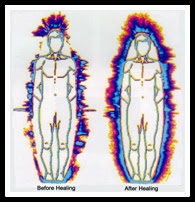 There are thousands of healers in practice. Healers work in many different ways. Some lay their hands on their patients. Some say they don’t need to touch their patient. Many works free of charge. There’s evidence to show that healers ran produce ‘miraculous’ results. No one really knows whether this is because they trigger off the body’s self-healing powers or because of mysterious forces. There are virtually no risks or side effects with healing.
There are thousands of healers in practice. Healers work in many different ways. Some lay their hands on their patients. Some say they don’t need to touch their patient. Many works free of charge. There’s evidence to show that healers ran produce ‘miraculous’ results. No one really knows whether this is because they trigger off the body’s self-healing powers or because of mysterious forces. There are virtually no risks or side effects with healing.
Herbalism
 One of the oldest branches of medicine. Many modern drugs are derived firm herbal remedies. Drug companies base much of their research on looking for useful compounds that can be prepared from plants. About a third of the drugs doctors prescribe are plant-based. Today many millions of people have turned away from orthodox medicine and prefer to use herbal remedies. Herbal remedies are available for just about every illness imaginable.
One of the oldest branches of medicine. Many modern drugs are derived firm herbal remedies. Drug companies base much of their research on looking for useful compounds that can be prepared from plants. About a third of the drugs doctors prescribe are plant-based. Today many millions of people have turned away from orthodox medicine and prefer to use herbal remedies. Herbal remedies are available for just about every illness imaginable.
There is no doubt that many herbal remedies do work – whether bought over the counter or prescribed by a herbalist.
Homeopathy
 Modern homeopathy was invented by Samuel Hahnemann in the 19th century. He believed that he could cure patients with minute doses of drugs. The theory is that the incredibly small doses trigger off the body’s self-healing mechanisms. Homeopathy has much in common with vaccination in which a small amount of a foreign substance is introduced into the patient’s body in order to stimulate the body’s defence mechanisms. It really does seem to work.
Modern homeopathy was invented by Samuel Hahnemann in the 19th century. He believed that he could cure patients with minute doses of drugs. The theory is that the incredibly small doses trigger off the body’s self-healing mechanisms. Homeopathy has much in common with vaccination in which a small amount of a foreign substance is introduced into the patient’s body in order to stimulate the body’s defence mechanisms. It really does seem to work.
Hypnotherapy
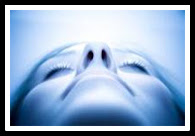 Modern hypnotherapy began with Franz Mesmer in Vienna in the 18th century. When used by a skilled expert it can be useful and effective. There’s evidence to show that hypnotherapy can help patients relax and deal with stress.
Modern hypnotherapy began with Franz Mesmer in Vienna in the 18th century. When used by a skilled expert it can be useful and effective. There’s evidence to show that hypnotherapy can help patients relax and deal with stress.
Hydrotherapy
 Simply means treatment using water. Hydrotherapy is practised in many health farms and alternative clinics. You can sit in it, be sprayed with it or drink it. You can have it very cold or very hot. Those who believe in hydrotherapy claim it can be used to treat all sorts of illnesses.
Simply means treatment using water. Hydrotherapy is practised in many health farms and alternative clinics. You can sit in it, be sprayed with it or drink it. You can have it very cold or very hot. Those who believe in hydrotherapy claim it can be used to treat all sorts of illnesses.
Music Therapy
 Four thousand years ago Hindu doctors used to play soothing music while surgeons operated. They used to have music played in the wards too – they believed it helped patients get better. They may have been right. The value of music therapy seems clear. Music helps cure emotional and mental problems – and helps relieve pain.
Four thousand years ago Hindu doctors used to play soothing music while surgeons operated. They used to have music played in the wards too – they believed it helped patients get better. They may have been right. The value of music therapy seems clear. Music helps cure emotional and mental problems – and helps relieve pain.
Meditation
 Many modern diseases are caused by stress – and by our inability to relax. Meditation is a relaxation technique which works – and which can be easily learned for home use.
Many modern diseases are caused by stress – and by our inability to relax. Meditation is a relaxation technique which works – and which can be easily learned for home use.
Naturopathy
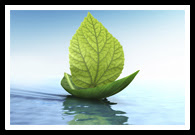 Naturopathy was founded by Hippocrates around 400 BC who said that the best way to maintain good health was to eat and exercise moderately and carefully. Simple naturopathy means having a healthy lifestyle.
Naturopathy was founded by Hippocrates around 400 BC who said that the best way to maintain good health was to eat and exercise moderately and carefully. Simple naturopathy means having a healthy lifestyle.
Osteopathy
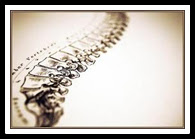 Founded in 1874 by Andrew Tayler Still, an American who believed that the faults in the bony part of the body cause many diseases. Osteopaths claim that they can treat illnesses by manipulating the body – especially the spine. I don’t think there is much difference between chiropractic and osteopathy. Excellent for problems such as backache. Some experts say that half of the patients going to an osteopath have backache. Many doctors with back trouble seek help from osteopaths.
Founded in 1874 by Andrew Tayler Still, an American who believed that the faults in the bony part of the body cause many diseases. Osteopaths claim that they can treat illnesses by manipulating the body – especially the spine. I don’t think there is much difference between chiropractic and osteopathy. Excellent for problems such as backache. Some experts say that half of the patients going to an osteopath have backache. Many doctors with back trouble seek help from osteopaths.
Five reasons why alternative medicine may be useful
- Alternative remedies are often more ‘natural’ than orthodox medical remedies – they allow and encourage the body to heal itself.
- It is often possible to learn alternative techniques for home use — gaining independence from professionals.
- Most – but not all – forms of alternative medicine are relatively safe. The risk of side effects are usually low.
- Alternative practitioners are not usually as rushed as orthodox doctors – they have more time to talk to patients.
- There are not usually any waiting lists for alternative treatment.
Cow Urine Remedies
/2 Comments/in Cow ProductsHoe Remedies from Cow Urine for General Diseases
Cow urine contains carbolic acid, which is a germicide. Thus it adds to purification and cleanliness. In ancient scriptures the cow urine is said to be holy and purifactory, from this point of view. In modern light cow urine contains Nitrogen, Phosphate, Urea, Urine acid, Potassium and Sodium. The months in which cow gives milk, the cow urine contains Lactose which is very beneficial for heart and brain disorders. Gold salts are also present, which are elixirs.
Some Precaution while taking Go Mutra medicine
The cow; whose urine is used must be disease free and young ie, the one which hasn’t given birth to a calf. The best quality cow urine is the one where cows can reach natural vegetation as food from forest areas and ridges. Cow urine should be filtered 7 times through clean cotton cloth which has been folded four times and taken empty stomach in morning. Remember the best results are obtained by taking fresh cow urine collected 47 min before drinking purpose otherwise it is fit for external USE ONLY. Nothing should be eaten within one hour of taking cow urine. While giving cow urine to breast fed children, mother should also be given the cow urine. During monthly periods the women get peace and strength by taking cow urine. Generally an adult can take around 100 ml of cow urine daily.
Use of Cow Urine in different diseases:
- Patients of constipation should take filtered cow urine more than two times daily to cleanse stomach.
- Soak Harad (English: Chebulic myrobalan, Latin: Teminalia chebula Retz) powder in cow urine. Heat it on low flame. When water evaporates and powder remains then it can be used as a remedy for constipation in case who cannot use cow urine directly.
- In diseases like old fever, jaundice, swelling etc mix cow urine with Kiratatikta (English: Chiretta, Latin: Swertia chirayita) and water. Take this mixture for seven days every morning and evening.
- In diseases like cough, asthma, cold etc. direct use of cow urine removes cough immediately and gives comforts.
- In jaundice, drinking cow urine filtered through cloth, empty stomach every morning gives relief in one month.
- In case of children’s dry cough, filtered cow urine mixed with tamarind powder can be given for quick relief.
- Jalodar (water retention) patients should take cow’s milk and side by side cow urine mixed with honey to get relief.
- According to Charak; fine iron powder should be soaked in cow urine and taken with milk gives quick relief in Jaundice. This preparation should be nicely filtered before intake.
- In case of swelling of body only milk should be taken along with cow urine side by side.
- By taking cow urine added with rock salt and mustard powder cures stomach diseases.
- In case of burning sensation of eyes, constipation, bodily laziness and dislike of food cow urine with sugar should be taken.
- In case of itching, boils, vicharchika cow urine mixed with amba haldi (English: Mango ginger or Cochin ginger, Latin: Curcuma amada) should be taken.
- Cow urine is very beneficial in case of Suva disease in females after delivery.
- In case of skin disease especially leucoderma, apply mixture of Hartal , Bakuchi (English: Psoralea seeds, Latin: Psoralia corylifolia) and Malankangani (English: Staff tree, Latin: Celastrus panniculatus) in cow urine. Make a paste and apply over the diseased part of skin.
- In case of ear pain and other diseases drops of warm cow urine may be put in ear.
- In case of itching, massage with cow urine and take bath with cow urine after that.
- Mix powdered krishna jirak (English: Black cummin, Black caraway, Latin: Carum Bulbocastanum, Carum Carvi) with cow urine. Use this for massage then take cow urine bath, it cures all skin diseases especially a sure shot remedy for itching.
- Heat a brick and then wet it in cow urine immediately. Wrap the warm brick in a cloth and put it over swollen liver or spleen. It is beneficial. Their is a saying in Bengali:- Livaray pidaya kim dukha pave mati hin vaidya! Gomutrena sek dav sukha pave sadhya!! Meaning only a foolish doctor cannot cure pain of liver. Give heat fomentation of cow urine you will be relieved immediately.
- If cow urine is taken empty stomach filarial (elephantiasis) disease is cured.
- Salts of cow urine are beneficial in Urinary bladder outflow obstruction and to balance movements of airs (vat rog) within body.
- Hairs become beautiful on applying cow urine on hair and massaging with it and keeping it for some time. Then hair should be washed with water
- Taking cow urine mixed with old jaggery, tamarind power is beneficial in ring worm, leprosy, and elephantiasis.
- Taking castor oil with cow urine for a month cures arthritis and other joint pains.
- Cow urine mixed with saffron should be given every morning and evening to children suffering from rickets (sukha rog) for one month.
- In case of itching, cow urine with crushed neem (English: Neem tree, Margosa tree, Latin: Azadirachta Indica, Melia Azedarach) leaves should be applied on affected parts.
- Tuberculosis patient is very much benefited just by smelling cow urine and cow dung, as the smell itself destroys the tuberculosis germs. Thus he may be put in cowshed and his cot should be washed with cow urine again and again.
- In case of ring warm, grind leaves of Dhatura (English: Thorn apple, Latin: Datura metel) and boil it in cow urine till it becomes thick. Apply it on affected parts.
- If hairs of head or other parts of body fall due to typhoid or use of any medicines, then a paste made as follows should be applied. First put fine Tobacco powder in cow urine. Leave it for ten days. In ten days it becomes like paste. On applying paste to area, where hairs have fallen off hairs will grow again. One can use it over the head also.
Insomnia(or sleeplessness): Desi Ghee can do wonders
/2 Comments/in Cow ProductsI am 38 years old suffering from chronic problem of insomnia. Various allopathic and homeopathic medicines could not help me get rid of my problem and trying things like low intensity bedroom light, changing of pillows and bedding were simply useless.
I had become completely depended on sleeping pills for last 5 years now. No doubt the relief was symptomatic and I faced sluggishness and laziness during the day. It felt like hell and was desperate to search for solution.
Then as luck would have it I came across the site vedicgiftshop.com. I had the opportunity to learn about the benefits of cow’s desi ghee. It said that if cow’s ghee (clarified butter) is rubbed on the soles of feet at night before going to bed, relaxes body and mind inducing a good night’s sleep in a person.

Gir Cow’sPure Desi Ghee
Buy Now!
At first I was apprehensive and kept thinking ‘how come ghee rubbed on soles induce sleep?’ but since I had tried so many other things I thought I might give it a try as well. So I ordered for pure desi ghee (Pure Desi Ghee) as they are quality products prepared from indigenous breed of cow, the Gir Breed.
I started using the ghee. After using for 15 days, I experienced to my surprise that I fell asleep immediately after rubbing the ghee on my soles. I mean this was miraculous. My mornings slowly became fresh and dependence on drugs (with so many side effects) just vanished.
To add to my surprise, my face had a new glow as slowly the dark circles around the eyes and spots etc disappeared and also my eyesight showed marked improvement.
– Vandana Goel
Adulteration of Ghee
/1 Comment/in Cow ProductsThe market price of ghee is almost 3 times more than the price of edible vegetable oils/fats. The supply of ghee is also far short of its demand. These gaps between price and availability leads to several malpractices. Adulteration of ghee is more common malpractice in India because it will fetch more profit to the traders and also result into increased supply. Two types of adulterants are used in ghee:
- Vegetable oils/fats, and
- Animal body fat
The adulteration of ghee can start at the stage of milk itself. Water emulsion of coconut, groundnut and other cheap oils are added to milk or cream. On souring and churning, these transfer to butter, and thus on boiling of butter or cream pass on to ghee.
i. Adulteration with vegetable oils/fats
The analytical constants of ghee, as discussed in the unit 7, cover a very wide range, permitting fairly high degree of adulteration while still keeping the constants within normal limits. The feeding of various oil cakes or oilseeds and even starvation (under feeding) can also alter the individual analytical characteristics of ghee as to bring perfectly genuine (pure) samples under suspicion of adulteration. Those vegetable oils/fats whose analytical constants are close to ghee and butter oil cannot be detected visually are preferred for adulteration. Coconut oil approaches closest to ghee as far as analytical characteristics (high polenske value and low sponification value, iodine value and butyro refractometer reading). In respect of physical resemblance, hydrogenated fats (edible vanaspati), particularly groundnut, is most preferred. Its melting point is slightly below 37oC, has solid to semisolid consistency and even the characteristic granular appearance of ghee.
(Dr. Ravi Malik convenor on Indian Medical Association commenting on adulteration in Ghee & Oil at News-24)
Realizing the problem of adulteration of ghee with vegetable oils/fats, the introduction of an easily detectable ‘marker’ in vanaspati has been made compulsory by the Vegetable Oil Products Control Order, which is under the control of Ministry of Food andAgriculture, Govt. of India. According to this order, vanaspati shall contain raw or refined sesame (til) oil not less than 5% by weight. The Baudouin colour test enables vanaspati containing sesame oil to be detected in adulterated ghee.
ii. Adulteration with animal body fat
Adulteration of ghee with animal body fat is not so common as with vegetable oil/ fats. Tallow or other animal body fats obtained from slaughter houses are mixed with ghee in different proportions. The animal body fat being hard cannot be detected visually. The chemical characteristics of ghee adulterated with animal body fat falls within normal range of pure ghee, hence their detection is difficult.
Further, it is found that ghee prepared from buffaloes fed with cotton seeds acquire analytical constants similar to those samples adulterated with animal body fat.
iii. Detection of adulteration in ghee
(Equinox Labs demonstrates how to find whether ghee is adulterated or not – NDTV India.)
Several tests have been developed from time to time to detect adulteration of ghee with vegetable oils/fats and animal body fat. Under the PFA rules the Baudouin test, which should be negative is mandatory, whereas Agmark standards recommends that Baudouin test and Phytosterol Acetate test should be negative. There is no reliable simple method, which can distinguish genuine ghee from ghee containing as high as 20-30% animal body fats.
The Baudouin test for sesame oil consists essentially in treating the fat with concentrated hydrochloric acid and adding to the extract a 2% solution of freshly distilled furfural in 95% ethyl alcohol. Development of a permanent pink colour indicates the presence of sesame oil (alternatively vanaspati) in ghee. This test can detect upto 3% sesame oil in ghee.
The Phytosterol acetate test also detects the adulteration of ghee with vegetable oils. Ghee is an animal fat and contains cholesterol while all vegetable oils contain sterols of other types which are together termed phytosterol. This test will not detect the presence of animal body fat, such as tallow’s and lards in ghee, since these also contain cholesterol. The acetate of these sterols have characteristic melting point. Admixture of phytosterol acetate with that of cholesterol sharply raises the melting points of the latter, permitting detection of vegetable oil in ghee.
The sterols are obtained from ghee by crystallization from ethanol of the isolated unsponifiable matter. These sterols are then precipitated from ethanol solution as digitonides using digitonin. On boiling with acetic anhydride the corresponding acetates are obtained, and their melting points are determined. The average melting point of sterol acetate from ghee is about 114.6oC (range 112.7o to 116.4oC) whereas of vegetables fats always more than 125oC. If the observed melting point of a test sample is 117oC or higher, phytosterol from vegetable fat is assumed to be present and test is positive.
Recently many advanced and sensitive techniques, such as thin layer-chromatography, paper chromatography and gas liquid chromatography have been developed for detection of ghee adulteration, but these are expensive and time consuming.
Shopping Policies
Top Post
 Ghee for Hair Loss & GrowthJanuary 27, 2013 - 11:14 pm
Ghee for Hair Loss & GrowthJanuary 27, 2013 - 11:14 pm Panchagavya & Organic Farming TechniquesJanuary 6, 2013 - 10:06 pm
Panchagavya & Organic Farming TechniquesJanuary 6, 2013 - 10:06 pm Gomutra Ark – As Immunomodulatory & Antioxidant AgentJanuary 6, 2013 - 5:07 pm
Gomutra Ark – As Immunomodulatory & Antioxidant AgentJanuary 6, 2013 - 5:07 pm
Latest Post
 East India | Patanjali Chikitsalaya Center List – 2017October 30, 2017 - 10:48 am
East India | Patanjali Chikitsalaya Center List – 2017October 30, 2017 - 10:48 am West India | Patanjali Chikitsalaya Center List – 2017October 30, 2017 - 10:48 am
West India | Patanjali Chikitsalaya Center List – 2017October 30, 2017 - 10:48 am South India | Patanjali Chikitsalaya Center List – 2017October 30, 2017 - 10:48 am
South India | Patanjali Chikitsalaya Center List – 2017October 30, 2017 - 10:48 am
Top Rated Products
-
 Srimad Bhagavad Gita As It Is - Hindi Edition - ISKCON
Rated 5.00 out of 5
Srimad Bhagavad Gita As It Is - Hindi Edition - ISKCON
Rated 5.00 out of 5₹ 275.00Original price was: ₹ 275.00.₹ 255.00Current price is: ₹ 255.00. -
 Srimad Bhagavad Gita As It Is - English - ISKCON
Rated 5.00 out of 5
Srimad Bhagavad Gita As It Is - English - ISKCON
Rated 5.00 out of 5₹ 330.00Original price was: ₹ 330.00.₹ 310.00Current price is: ₹ 310.00. -
 Srimad Bhagavad Gita As It Is - Marathi - ISKCON
Rated 5.00 out of 5
Srimad Bhagavad Gita As It Is - Marathi - ISKCON
Rated 5.00 out of 5₹ 260.00Original price was: ₹ 260.00.₹ 240.00Current price is: ₹ 240.00.




